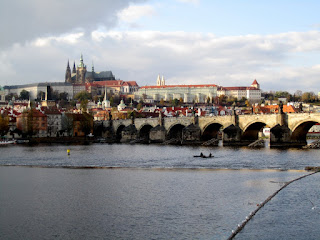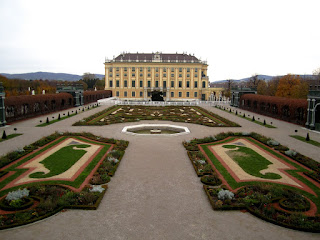
We arrived to our hotel at about 6pm on Friday. It was a long day of flights, connecting to Istanbul via Munich. The sun had already set by the time we reached the city, so we had to navigate our way in the dark. I traveled with my friend Sarah, who is studying in Prague with me, and my friend Katie from Georgetown, who is studying in France. We were staying in the old part of town called the Sultanahmet, just steps away from the most famous sights including the Aya Sofia and Blue Mosque. Before calling it a night for an early day of sightseeing to follow, we settled in at a cool bar nearby. Hookah (Nargila) is on every corner, and every Turkish person partakes in this ancient smoking technique. We did not stray from tradition.

Saturday was jam packed with the greatest hits of Istanbul. We started at the Sultanahmet, which is Turkish for Blue Mosque (the first picture above). Interestingly enough, we were unable to enter because it was prayer time. The call to prayer for the city's Islamic population sounds throughout the day from the hundreds of mosques. It was such a strange experience, considering I have not traveled outside of a mostly-Christian country before this. In order to kill a little time before returning after prayer time, we made our way to the Aya Sofia (pictured above).

The Aya Sofia (or Hagia Sophia) is one of the world's oldest mosques, built around 500 AD. It was the largest building in the world when it was built, and it is a lasting symbol of Turkey's Islamic traditions. It has been converted into a museum, where you can view the inside. It is a truly MASSIVE house of prayer, and the preservation and detail are just astonishing. It's also really interesting that there are Christian art works throughout the building because of the Byzantine conquest of Constantinople around the 10th century.

Next, we made our way to the Topkapi Palace, home of the Ottoman sultans for several hundred years. It sits next to the Aya Sofia on the edge of the waterway known as the Golden Horn. Absolutely astonishing views. Finally, we made our way back to the Blue Mosque. This was my first time inside of a mosque. We had to remove our shoes before entering, and it was interesting to see Islamic prayer first hand. So different than most Americans/ Europeans are used to.

After grabbing a street kebap for lunch, we went shopping at Kapalı Çarşı, the Grand Bazaar. It is a whirlwind experience, with literally thousands of vendors selling all kind of goods and crafts. You can buy scarves, hookahs, purses, lamps, plates, clothes, food, etc. The greatest part is that you are expected to call your own price and/or haggle with the storeowners. Not a Western experience in the least.

After a long day on our feet, we made our way out of the historic city center up to Istiklal Avenue in the north. It is basically the Times Square and Broadway of Turkey, with hundreds of shops and restaurants and big bright lights. Interestingly enough, Taksim Square at the end was the sight of last month's bombing in Turkey. I am glad we were not in Istanbul for that, but otherwise I felt very safe in this big city (the 5th largest in the world!). We had dinner at a nicer Turkish restaurant, and the food is similar to what you would expect of Greek food. Lots of tzatziki sauce and shish kebap. And of, course we smoked a little more hookah. It is difficult to drink in Turkey because alcohol taxes are approximately 100% with 99% of the citizens practicing Islam. A beer still only costed about $5, but that was a lot for Turkish prices. The Turkish lira runs about 1.50 to the dollar, making it an inexpensive weekend.

Sunday was our last full day in Istanbul, so we decided to take a boat cruise down the Bosporus to the other side of Istanbul, which lies in Asia. The main part of the city is considered to be technically on the European continent. Look, mom, I've been to my third continent! The cruise was about 1.5 hours each way, making it an all day experience. We stopped at Anadolu Kavağı as our final destination. It was a small seaside town, where we had lunch on the waterfront. We also climbed to the top of the large hillside where Roman ruins were to get a better view of the Bosporus Strait from the Asian side (pictured below).

That night, we settled into a really chill place near the hotel for some more hookah and a few beers. Notice, there is no such thing as Turkish made beer, so they mostly sell Danish and Belgian brands. The people we met in Turkey were by far the nicest I have met so far in Europe as a whole. Their English may not be the best, but it was certainly better than my Turkish! Every time we sat down at a restaurant or bar, the servers could not wait to talk to us to practice their English or learn why Americans had made their way to Turkey. One guy even said that he dreamed of moving to California because he was so thankful for what Americans had done in Iraq to free his Kurdish brothers. Pretty cool to see someone appreciate your culture and government (controversial or not) from halfway across the world.

Really, Istanbul was one of the most amazing cities that I have been to. I was not disappointed once...well except for the snow in Munich and Prague that delayed our return for 8 hours. But you can't have everything.
I will be back in Paris by Thursday - assuming the weather allows with more than 8 inches of snow on the ground in Prague already. Czech in l8r!




































